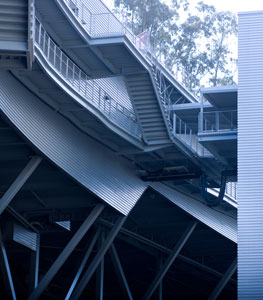Clinical Research
Continuosly Improving Care
 We at the UCSF Craniofacial Center perform clinical research with the goal of continuously improving care for our current and future patients, and we work hard to share our findings for the betterment of craniofacial care throughout the world. We evaluate our outcomes, and we use that information to design and implement new and potentially better treatments when they are needed or to maintain the state of the art when that is best for our patients. For conditions that do not currently have optimal solutions, we test new, potentially groundbreaking treatments in clinical trials, and we use basic science to investigate the causes of craniofacial disorders, with the overarching goal of translating that knowledge into better craniofacial care in the future.
We at the UCSF Craniofacial Center perform clinical research with the goal of continuously improving care for our current and future patients, and we work hard to share our findings for the betterment of craniofacial care throughout the world. We evaluate our outcomes, and we use that information to design and implement new and potentially better treatments when they are needed or to maintain the state of the art when that is best for our patients. For conditions that do not currently have optimal solutions, we test new, potentially groundbreaking treatments in clinical trials, and we use basic science to investigate the causes of craniofacial disorders, with the overarching goal of translating that knowledge into better craniofacial care in the future.
Selected recent publications:
Maine RG1, Hoffman WY, Palacios-Martinez JH, Corlew DS, Gregory GA. Comparison of fistula rates after palatoplasty for international and local surgeons on surgical missions in Ecuador with rates at a craniofacial center in the United States. Plast Reconstr Surg. 2012 Feb;129(2):319e-326e. doi: 10.1097/PRS.0b013e31823aea7e.
Vargervik K1, Oberoi S, Hoffman WY. Team care for the patient with cleft: UCSF protocols and outcomes. J Craniofac Surg. 2009 Sep;20 Suppl 2:1668-71. doi: 10.1097/SCS.0b013e3181b2d6e3.
Cheung T, Oberoi S. Three dimensional assessment of the pharyngeal airway in individuals with non-syndromic cleft lip and palate. PLoS One. 2012; 7(8):e43405. PMID: 22952677
Goodwin AF1, Oberoi S, Landan M, Charles C, Massie JC, Fairley C, Rauen KA, Klein OD. Craniofacial and dental development in Costello syndrome. Am J Med Genet A. 2014 Jun;164A(6):1425-30. doi: 10.1002/ajmg.a.36475. Epub 2014 Mar 25.
Garland CB1, Pomerantz JH. Regenerative strategies for craniofacial disorders. Front Physiol. 2012 Dec 14;3:453. doi: 10.3389/fphys.2012.00453. eCollection 2012.


